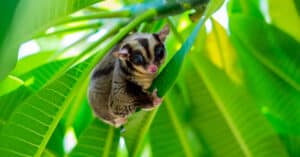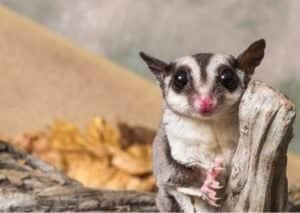The baby sugar glider is a tiny and adorable creature with many interesting traits. Did you know they are the size of a grain of rice at birth or that they grow extremely quickly? How about that they’re almost always born in pairs?
There are so many new things to learn about baby sugar gliders! Let’s jump into six awesome facts and some adorable pictures!
#1: A Baby Sugar Glider is Called a Joey!
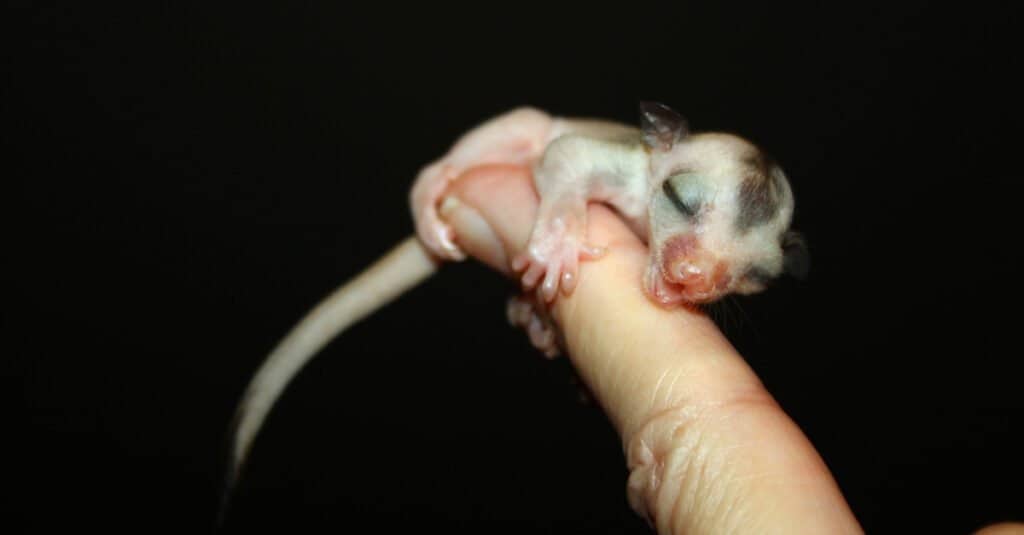
Like kangaroos, baby sugar gliders are also called joeys.
©Doty911/Shutterstock.com
Baby kangaroos are called joeys which is commonly known, but did you know that all marsupials call their babies joeys? The sugar glider is indeed a marsupial, so a baby sugar glider is also called a joey! A group of sugar gliders is called a colony and colonies are common because sugar gliders are very social animals. Colonies can consist of up to 40 sugar gliders!
#2: Baby Sugar Gliders Are Usually Twins
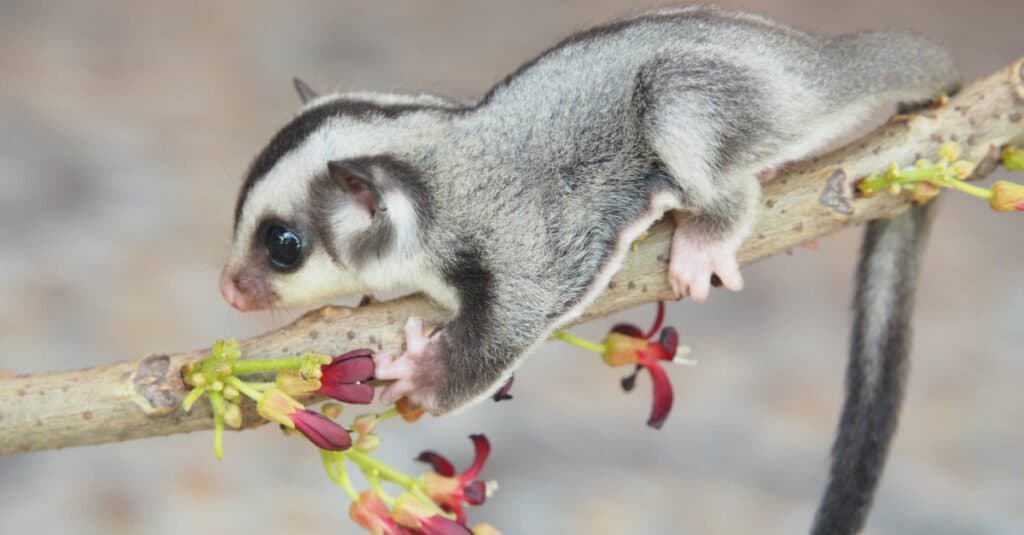
It is more common for sugar gliders to be twins than singletons.
©AsepBachowie/Shutterstock.com
In human pregnancies, there’s no doubt that it’s more common to have a singleton baby than a set of twins. However, sugar gliders are quite the opposite.
For the pregnant female sugar glider, having twins is the norm. Sugar gliders can occasionally give birth to one baby, but their litters never exceed two baby sugar gliders. This adaptation ensures that the tiny marsupials can retain their gliding abilities and avoid getting weighed down.
#3: Sugar Glider Joeys Cannot Regulate Their Temperature

Sugar glider joeys depend on their parents to regulate their body temperatures.
©i3iwtz/Shutterstock.com
Did you know that male sugar gliders play an important role in the life of a baby sugar glider? It’s true! Without male sugar gliders, babies might not survive at all. This is because baby sugar gliders are not born with the ability to control their body temperature, therefore they need their mom and dad to cuddle them to keep them warm.
#4: Newborn Sugar Gliders Can’t Glide
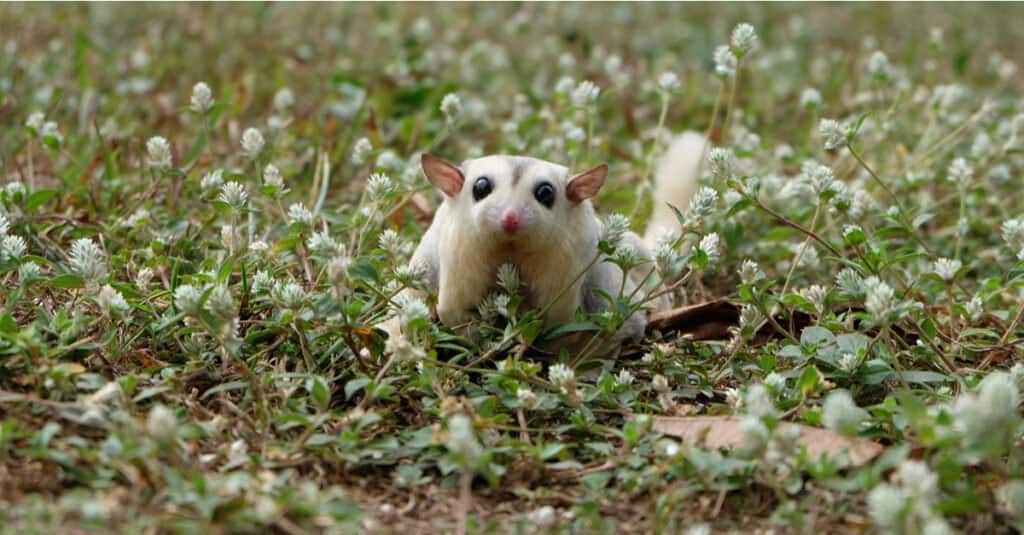
Young sugar gliders
can’t fly
for more than three months after birth!
©i3iwtz/Shutterstock.com
Despite their names, baby sugar gliders cannot glide or ‘fly’. It’s not until they are around 100 days old and fully matured that they attempt to take flight. Sugar gliders have skin that stretches from their ankle to their wrist that creates a parachute-like effect and allows them to glide freely through the air. Some sugar gliders can even change the movement of this skin to change direction in flight.
#5: Baby Sugar Gliders Live in a Pouch
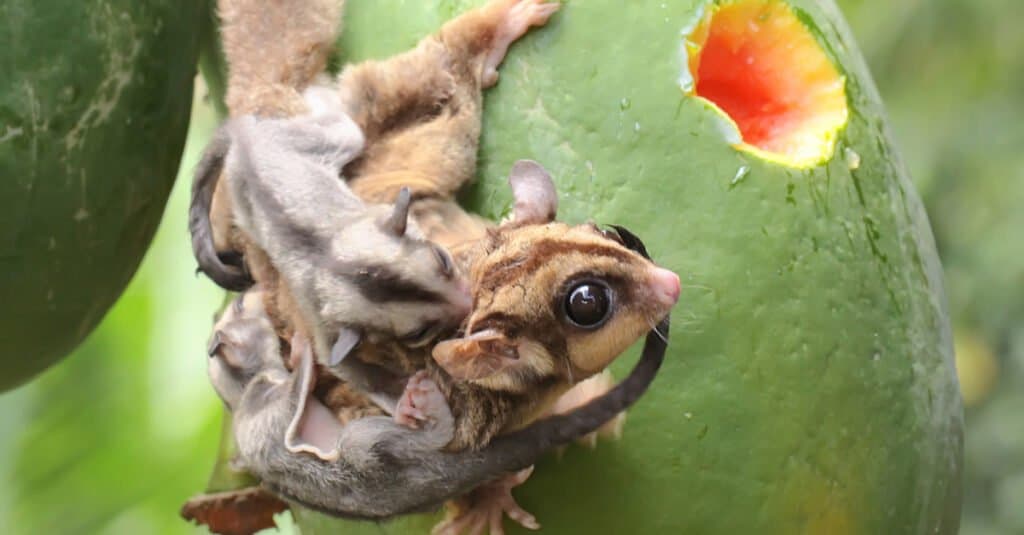
Sugar glider babies have a special “room” in their mothers’ pouches.
©I Wayan Sumatika/Shutterstock.com
Much like kangaroos, mother sugar gliders keep their babies in a special pouch called a marsupium. The pouch is on the female sugar glider’s midsection and does not have an opening.
Instead of ‘opening’, the pouch rather expands around the baby sugar glider tightly enough to keep it secure so that it won’t fall out. The babies are born underdeveloped and they need lots of nurturing before they will be ready to take on the world without mom’s built-in bedroom.
Sugar glider joeys don’t need to leave the pouch to eat. Female sugar gliders produce milk for their babies from milk that’s located inside their marsupium, or pouch. Sugar glider mothers have anywhere from two to four nipples.
#6: Sugar Glider Joeys Are Nocturnal
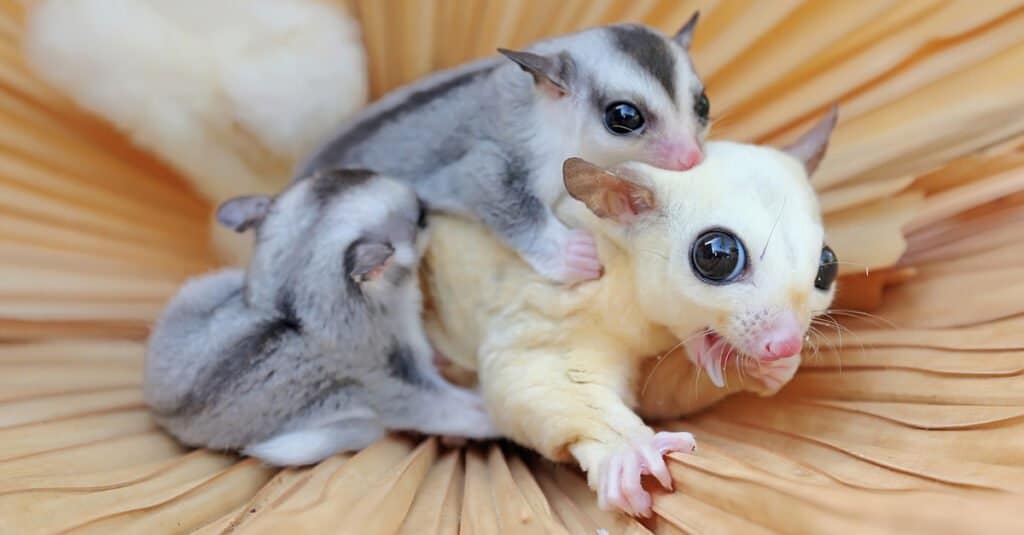
Sugar glider joeys are nocturnal.
©I Wayan Sumatika/Shutterstock.com
Animals that are active at night and sleep during the day are called nocturnal. Some nocturnal animals even have special adaptations that help them be more productive over the course of the night.
Baby sugar gliders are nocturnal. They have very large eyes and that allow them to see extremely well in the dark. Since sugar gliders are such tiny animals, it’s much safer for them to be active at night. They have many predators like birds, snakes, foxes, and more. The darkness helps sugar gliders hide and many likely predators sleep through the night.
The photo featured at the top of this post is © i3iwtz/Shutterstock.com
FAQs (Frequently Asked Questions)
What are baby sugar gliders called?
Baby sugar gliders are called joeys, just like kangaroos and all other marsupials. A group of sugar gliders is called a colony.
How much do baby sugar gliders weigh?
A joey weighs about as much as a grain of rice which is less than half a gram. However, over the course of only 6 months they grow to their full grown size and weigh somewhere between 80 to 160 grams.
What do baby sugar gliders eat?
While in their mother’s pouch, joeys drink the milk that their mothers produce until they are around 8 weeks out of the pouch at which time most will be fully weaned. After they are weaned they are opportunistic eaters, which means they eat what they can. However, one of their favorite foods is eucalyptus gum. They also eat bugs, plants, and other small animals.
Where do baby sugar gliders live?
These baby animals live in the pouches their mothers provide, it’s a natural bedroom. In general these babies love to hang out in cool places. As adults, they live in trees primarily in Australia and Indonesia.
Thank you for reading! Have some feedback for us? Contact the AZ Animals editorial team.




